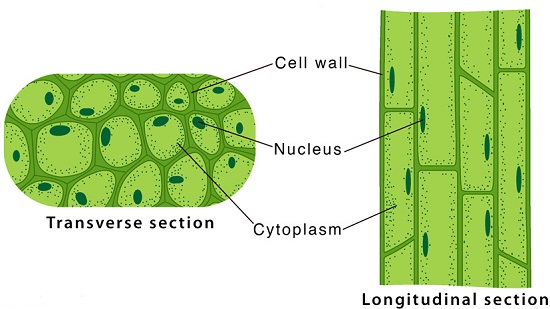Last Updated: 23-12-2021 | Esoma-KE
Introduction to Transport in Plants and Animals
- Transport is the movement of substances within an organism.
- All living cells require oxygen and food for various metabolic processes.
- These substances must be transported to the cells.
- Metabolic processes in the cells produce excretory products which should be eliminated before they accumulate.
- The excretory products should be transported to sites of excretion.
- Organisms like amoeba are unicellular.
- They have a large surface area to volume ratio.
- The body is in contact with the environment.
- Diffusion is adequate to transport substances across the cell membrane and within the organism.
- Large multi-cellular organisms have complex structure where cells are far from each other hence diffusion alone cannot meet the demand for supply and removal of substances.
- Therefore an elaborate transport system is necessary.
- Simple plants such as mosses and liverworts lack specialized transport system.
- Higher plants have specialized transport systems known as the vascular bundle.
- Xylem transports water and mineral salts.
- Phloem transports dissolved food substances like sugars.
Plant Roots
Functions of Roots in Plants
The main functions of roots are;- Anchorage.
- absorption.
- storage.
- gaseous exchange.
Structure of Roots and Root Hairs
- The outermost layer in a root is the piliferous layer.- This is a special epidermis of young roots whose cells give rise to root hairs.
- Root hairs are microscopic outgrowths of epidermal cells.
- They are found just behind the root tip.
- They are one cell thick for efficient absorption of substances.
- They are numerous and elongated providing a large surface area for absorption of water and mineral salts.
- Root hairs penetrate the soil and make close contact with it.
- Below the piliferous layer is the cortex.
- This is made up of loosely packed, thin walled parenchyma cells.
- Water molecules pass through this tissue to reach the vascular bundles.
- In some young plant stems, cortex cells contain chloroplasts.
- The endodermis (starch sheath) is a single layer of cells with starch grains.
- The endodermis has a casparian strip which has an impervious deposit controlling the entry of water and mineral salts into xylem vessels. - Pericycle forms a layer next to the endodermis.
- Next to the pericycle is the vascular tissue.
- In the Dicotyledonous root, xylem forms a star shape in the centre, with phloem in between the arms.
- It has no pith. In monocotyledonous root, xylem alternates with phloem and there is a pith in the centre.
Internal Structure of a Root Hair Cell
Function of the Stem
The main functions of the stem are;- Support and exposure of leaves and flowers to the environment,
- Conducting water and mineral salts
- Conducting manufactured food from leaves to other parts of the plant.
- Vascular bundles are continuous from root to stems and leaves.
- The epidermis forms a single layer of cells enclosing other tissues.
- The outer walls of the cells have waxy cuticle to prevent excessive loss of water.
- The cortex is a layer next to the epidermis.
- It has collenchyma, parenchyma and sclerenchyma cells.
a) Collenchyma
- Is next to the epidermis and has thickened walls at the corners which strengthen the stem.

Image Courtesy
b) Parenchyma
- Cells are irregular in shape, thin walled and loosely arranged hence creating intercellular spaces filled with air.- They are packing tissues and food storage areas.

Image Courtesy
c) Sclerenchyma
- Cells are closely connected to vascular bundles.- These cells are thickened by deposition of lignin and they provide support to plants.

Image Courtesy




